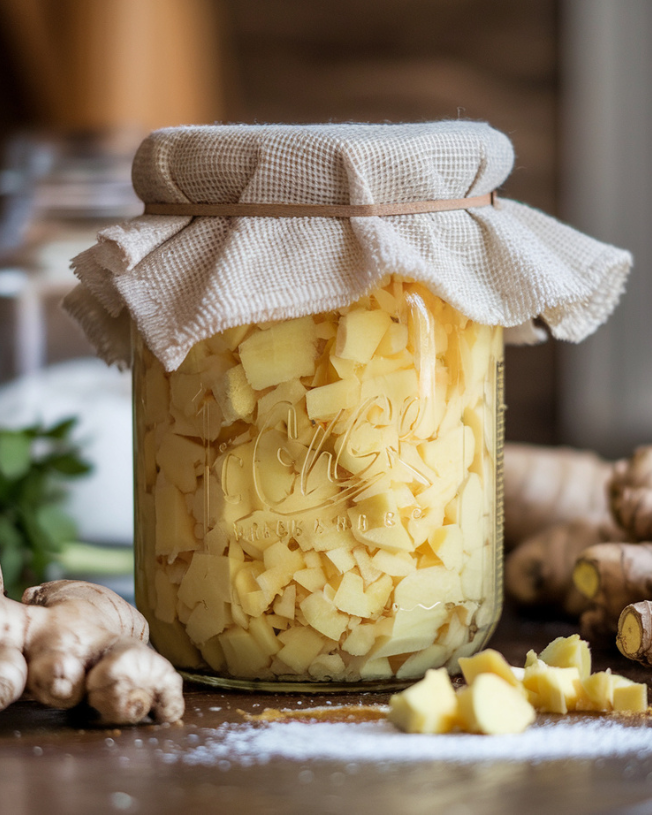Post-fermented tea has been gaining popularity among health enthusiasts and tea lovers alike. With its unique flavors and potential health benefits, it’s no wonder that more people are looking to brew their own. But what exactly is post-fermented tea? In this guide, we’ll explore its history, brewing process, health benefits, and tips for enjoying this delightful beverage.
Table of Contents
ToggleWhat is Post Fermented Tea?
Post-fermented tea, often referred to as fermented or aged tea, is made through a unique fermentation process that involves microbial action. Unlike traditional teas, which are brewed and consumed quickly, post-fermented teas are aged for a period, allowing the flavors to develop and deepen over time. This process not only enhances the taste but can also boost the tea’s health benefits.
Types of Post-Fermented Tea
There are various types of post-fermented tea, with the most popular being Pu-erh tea. Originating from the Yunnan province in China, Pu-erh undergoes a fermentation process that gives it its distinctive earthy flavor. Other examples include Liu Bao tea, a lesser-known post-fermented tea that hails from Guangxi, China. Both varieties offer unique taste profiles and health benefits.
Pu-erh Tea: This tea comes in two types: Sheng (raw) and Shou (ripe). Sheng Pu-erh is made from raw leaves and undergoes a natural fermentation process, while Shou Pu-erh is artificially fermented to speed up aging.
Liu Bao Tea: Known for its robust and slightly sweet flavor, Liu Bao tea is often aged in bamboo baskets, which imparts a unique character to the tea.
The Brewing Process
Brewing this tea may seem intimidating at first, but it’s quite simple once you know the steps. Below, we’ll guide you through the process to ensure you create the perfect cup every time.
Step 1: Gather Your Ingredients
To make fermented tea, you’ll need:
- Post-fermented tea leaves (e.g., Pu-erh or Liu Bao)
- Filtered water
- Teapot or gaiwan
- Tea scale (optional, for precision)
- Kettle (preferably with temperature control)
Step 2: Measure the Tea
Start by measuring the amount of tea you want to brew. Generally, a good rule of thumb is to use about 5-7 grams of tea leaves for every 200 ml (about 7 oz) of water. However, feel free to adjust this based on your taste preference.
Step 3: Heat the Water
The ideal temperature for brewing post-fermented tea varies based on the type. For Pu-erh tea, a temperature of 90-95°C (194-203°F) works best. Meanwhile, Liu Bao tea is typically brewed at a slightly lower temperature of 85-90°C (185-194°F).
Step 4: Rinse the Leaves
It’s important to rinse the tea leaves before brewing. This process removes any impurities and awakens the flavor. To do this, pour a small amount of hot water over the leaves, let it sit for about 10-15 seconds, and then discard the water.
Step 5: Brew the Tea
Now, it’s time to brew! Pour the hot water over the rinsed tea leaves and let it steep for the recommended time. Generally, 30 seconds to 1 minute is sufficient for the first infusion. You can adjust the steeping time for subsequent infusions, usually increasing by 10-20 seconds with each steeping.
Step 6: Enjoy!
After brewing, pour the tea into your cup or teapot. Take a moment to appreciate its rich aroma before taking a sip. The complex flavors will unfold on your palate, making every cup a delightful experience. You can enjoy it as is or enhance the flavor with honey, lemon, or other additions based on your taste.
Health Benefits of this fermented drink
This tea offers various health benefits, thanks to the fermentation process and the compounds present in tea leaves. Some of the potential benefits include:
Improved Digestion: The probiotics produced during fermentation can help promote gut health and enhance digestion. This makes post-fermented tea a wonderful choice for those who experience digestive discomfort.
Weight Management: Some studies suggest that post-fermented teas may aid in weight management by promoting fat oxidation and metabolism. The unique compounds found in these teas can help regulate your body’s energy levels and contribute to a healthy lifestyle.
Rich in Antioxidants: Like other teas, post-fermented varieties contain high levels of antioxidants, which can help protect the body against oxidative stress. Antioxidants are essential for maintaining overall health and can reduce the risk of chronic diseases.
Reduced Cholesterol Levels: Some research indicates that drinking post-fermented tea may help lower cholesterol levels, contributing to overall heart health. This benefit makes it a great choice for those looking to improve their cardiovascular wellness.
Enhanced Mental Clarity: The moderate caffeine content in post-fermented tea can provide a gentle boost of energy and enhance mental clarity without the jitters often associated with coffee. This makes it an excellent choice for a midday pick-me-up.
Tips for Enjoying Post-Fermented Tea
Experiment with Brewing Times: Everyone’s taste preference is different, so feel free to experiment with brewing times and temperatures to find your ideal cup. Don’t hesitate to keep a brewing journal to note what works best for you.
Try Multiple Infusions: One of the best aspects of post-fermented tea is its ability to be steeped multiple times. Each infusion reveals different flavors, so enjoy the journey. Some enthusiasts find that the second and third infusions are the most flavorful.
Store Properly: To maintain the quality of your post-fermented tea, store it in a cool, dark place, away from strong odors and moisture. Consider using an airtight container to preserve its unique flavor and aroma.
Pair with Food: Post-fermented tea can be a delightful accompaniment to meals. It pairs particularly well with rich, savory dishes. The tea can help cleanse the palate between bites, enhancing your dining experience.
Join a Community: If you’re passionate about post-fermented tea, consider joining a tea community or forum. Sharing experiences and learning from others can deepen your appreciation of this unique beverage. Local tea shops often host tastings and workshops, which can be a great way to meet fellow tea lovers.
Common Mistakes to Avoid
When brewing post-fermented tea, it’s important to avoid a few common pitfalls:
Using Water That’s Too Hot: Overheating your water can scorch the leaves, leading to a bitter taste. Always check the recommended brewing temperatures for the specific tea you’re using.
Not Rinsing the Leaves: Skipping the rinse can result in a less enjoyable cup. This step is crucial for awakening the flavors and removing any dust or impurities.
Using Stale Tea Leaves: Always use fresh post-fermented tea leaves for the best flavor and health benefits. Old tea can lose its potency and taste flat.
Ignoring Infusion Times: Each tea has its unique infusion times. Experiment to find what works best for you, but avoid steeping for too long to prevent bitterness.
Conclusion
Post-fermented tea is more than just a beverage; it’s an experience. With its rich flavors, potential health benefits, and unique brewing process, it’s no wonder that tea lovers around the world are embracing this delightful drink. Whether you’re a seasoned tea enthusiast or just beginning your journey, exploring the world of post-fermented tea will undoubtedly lead to a greater appreciation of this ancient beverage.









